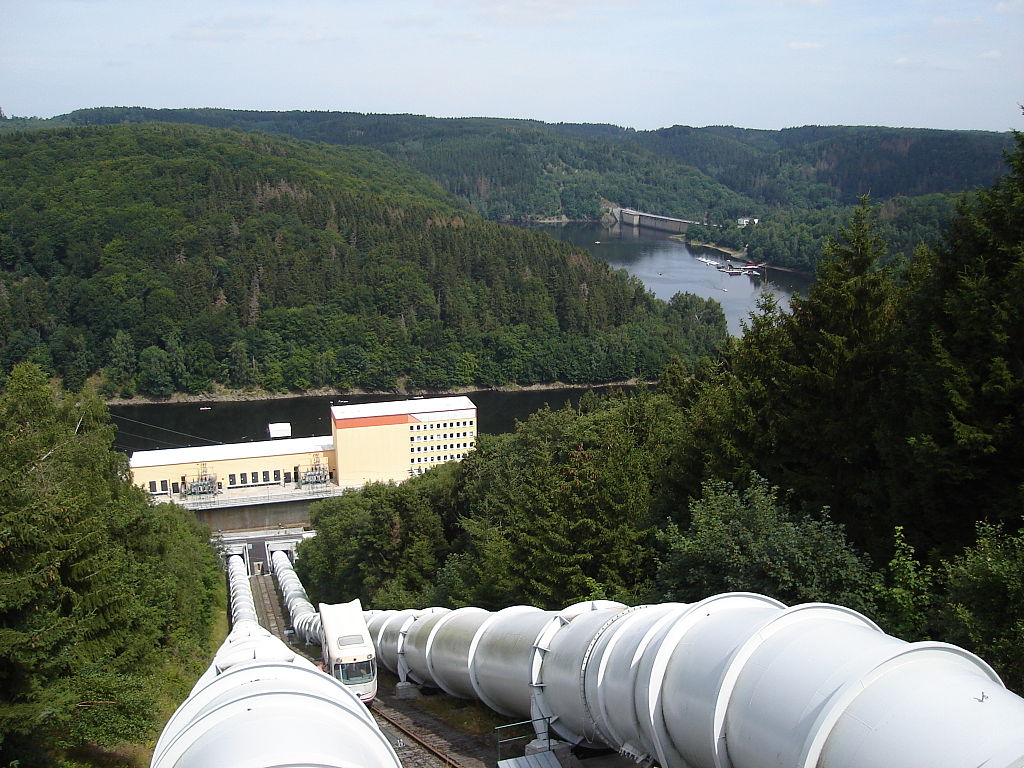In his programme for the decarbonisation of Germany, Economics Minister Habeck relies on the rapid expansion of solar and wind power plants. However, since these only produce electricity when weather conditions permit, electricity storage facilities are to temporarily store surplus electricity and release it back into the grid when demand increases. Our guest author Hans Ambos looks at the dimensions involved.
Expansion of pumped storage power plants hardly possible
You really can’t store electricity in the power grid, even if some politicians think it’s possible. The only electricity storage facilities that can store significant amounts of energy are pumped-storage power plants. But all 26 pumped-storage power plants in Germany can cover Germany’s electricity needs for just 17 minutes. After that, their upper reservoirs are empty and they have to stop generating electricity. Since the topography available in Germany for pumped-storage power plants is largely utilised, further expansion is hardly possible. Ultimately, the resistance of environmentalists and conservationists would also be great.

Nordlink a prestige project worth billions of euros
The new HVDC cable NordLink to Norway, with a capacity of 1400 MW at 525 kV, was supposed to alleviate the problem. “Exchange of green electricity and electricity storage for Germany” spread the ÖR media and the BMU. Norway has 1,250 dam hydroelectric power plants, but only one of them is a small pumped storage plant. The Saurdal pumped storage power plant, with a capacity of just 320 MWh. That is why it is not even possible for Norway to store surplus wind power from Germany, because the necessary technology is not even available there. In summer, Norway produces much more electricity at very low cost than it consumes itself and then exports it to all countries around it, including England and now Germany. In winter, however, the Norwegians need their electricity themselves, which is exactly when we want to call up the stored electricity again.
Battery storage neither available nor affordable on the scale required
The largest battery storage power plant in the world, the Moss Landing Energy Storage Facility in Monterey County (USA) has a peak output of 300 MW and a capacity of 1,200 MWh. It would take 200 such batteries to supply Germany with electricity for just four hours, then these electricity storage facilities are empty. To survive a two-day dark period, 2,500 such systems would have to be installed in Germany. But the lithium would have to be imported from another planet. And we are only talking about electricity supply, which currently accounts for 25 percent of primary energy consumption. With decarbonisation, Habeck wants to replace all fossil energy sources with electricity.
Electric car as electricity storage – only a few have the necessary technology on board
With “Smart-Grid”, politicians want to use millions of e-cars as electricity storage “power to car”. This cannot work in Germany, because the e-cars from VW, Audi, Mercedes, etc. are not technically capable of feeding electricity back into the grid…. There are only a few Asian vehicles with this special technology. Moreover, the German electricity grid is not designed for bidirectional charging. In addition, practically no one in Germany will voluntarily make their electric car available as an electricity storage device for the general grid. After the first field tests, however, one hears practically nothing more about this project.
The dream of hydrogen as an electricity storage medium
Politicians also like to mention hydrogen as an alternative for storing energy. When electricity is converted to hydrogen and back to electricity, 75 % of the energy is lost for physical and technical reasons. These plants are also very expensive. According to the Handelsblatt, the price of electricity would have to rise to over 1.50 € per kWh. Quite apart from the fact that the technology required for this does not yet exist in gas-fired power plants.
The following articles have appeared so far in this short series:
Energy turnaround into a dead end
Energy transition into a dead end – solar installations
